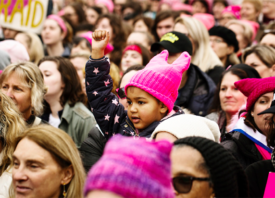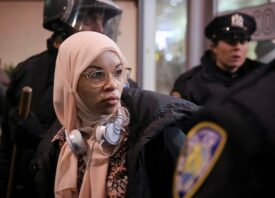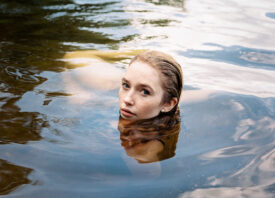Search this site
Photography Hashtags Are Still Relevant in 2023. Here’s Why.

Two years ago, The Los Angeles Times declared that hashtags had “fallen out of style.” A decade after they were first introduced on Instagram, hashtags were starting to feel “dated and cringeworthy.” But that shift came with one major caveat: influencers still relied on hashtags to monetize their content. The emergence of TikTok, where people used hashtags to surface on the main feed, was largely to thank for the hashtag renaissance of the early 2020s.
In 2023, are hashtags “corny” or relevant? Maybe both. In any case, they can be effective: using the right photography hashtags helps to make your content more discoverable, increasing the likelihood that potential clients will be able to find your work. That’s true whether you’re using TikTok or Instagram.
According to research conducted last year by HubSpot, 80% of Instagram marketers report that hashtags were effective in their Instagram strategy. 32% say that optimizing posts with relevant hashtags is an effective strategy when gaining your first 1,000 followers. What’s more, those surveyed indicate that 19% of Instagram impressions come from hashtags.
Research photography hashtags
As for the number of photography hashtags you should use, less can be more. In 2021, Instagram made the recommendation to use between three and five hashtags per post. Boosting that to ten to twenty will not increase your reach, according to Instagram. This point is a bit controversial, and Instagram allows up to thirty, so it’s not a hard and fast rule.
No matter the number, your hashtags should be a mix of broad hashtags (e.g. #wildlifephotographers) and niche hashtags (e.g. #ilcp_photographers, the official hashtag of the International League of Conservation Photographers, a collective of ethical photographers focusing on conservation).
Using a mix of “bigger” hashtags with 100,000+ posts and “smaller” hashtags with 10,000+ means you’re hedging your bets: you’re more likely to show up in searches for hashtags with fewer posts, but you’ll potentially reach more people if you crack the ‘Top Posts’ for a frequently used hashtag.
The best way to determine what hashtags will work for you is to research your target customer. Nina Mace, a family photographer and mentor, limits herself to up to three hashtags per post. “I use hashtags that I know my potential customers are using, which is derived from my keyword research for my website,” she tells us.
Clients looking for local talent sometimes use location-based terms in their search, so it’s a good idea to include them if you’re hoping to reach those in your community. Mace, for example, has used hashtags like #ukfamilyphotographer, #camberleyphotographer, and #surreyfamilyphotographer to reach clients in her area.
Take a look at what other photographers in your niche are tagging (look at ‘Top Posts’), and tailor them to suit your work. Check out what hashtags your dream clients and existing clients are following as well, and start a spreadsheet with those hashtags so you can pull from them in the future.
It’s good practice to have a library of many hashtags that you can choose from so that you’re not using the same ones over and over. None of your photos are exactly the same, so your hashtags shouldn’t be either: resist the urge to copy and paste.
Later, a social media management tool, also has a hashtag generator that can help you find targeted photography hashtags. Even better, their software will analyze what hashtags are actually working for you by driving engagement, likes, saves, and so on. These analytics can be invaluable when it comes to improving your hashtag strategy.
Another tool to consider is IQhashtags, especially if you use Reels: they’ll provide detailed metrics for what’s driving engagement and what isn’t.
Avoid banned hashtags
Instagram punishes you for using banned hashtags by not showing your posts to other users. The company does not publish official information about banned hashtags, but you can regularly find outside companies compiling their own updated lists. You might be surprised by what you find: this list from Kicksta, for example, includes photography hashtags such as #iphonegraphy, #mirrorphoto, and perhaps most confoundingly, #streetphoto.
Get your work featured using photography hashtags
Generally speaking, there are two different types of photography hashtags: searchable and submittable. Searchable hashtags are general terms that people can follow, while submittable hashtags belong to specific accounts that regularly feature new work.
For example: When you tag #filmphotography (searchable), you’re hoping to show up whenever anyone searches that hashtag. But when you tag #analoguepeople (submittable), you’re directly submitting your work for consideration for the Instagram page Analogue People. (You can check out some of our favorite submittable film photography hashtags here.)
When you’re building your account as a photographer, submitting to these kinds of “hubs” or feature accounts can help you get more eyeballs on your work because someone’s checking them consistently. If you do get featured, you open yourself up to a whole new audience.
Don’t rely on hashtags alone
Let’s face it: hashtags aren’t as essential as they once were, even though they’re still relevant. Algorithms are advanced enough these days that users can surface relevant content without ever having to click on a hashtag: keyword searches, for example, make categorizing posts easy—and they rely on captions rather than hashtags.
For that reason, hashtags by themselves are very unlikely to make you an overnight influencer. Instead, a good hashtag strategy will blend seamlessly into your overall social media strategy. As Instagram puts it: the content itself and the way people interact with it can affect distribution more than the hashtag.
Post great photos consistently, experiment with different formats (Reels, Stories, posts), and engage with other people in the photo industry. Then, use relevant photography hashtags to fully optimize your content.



